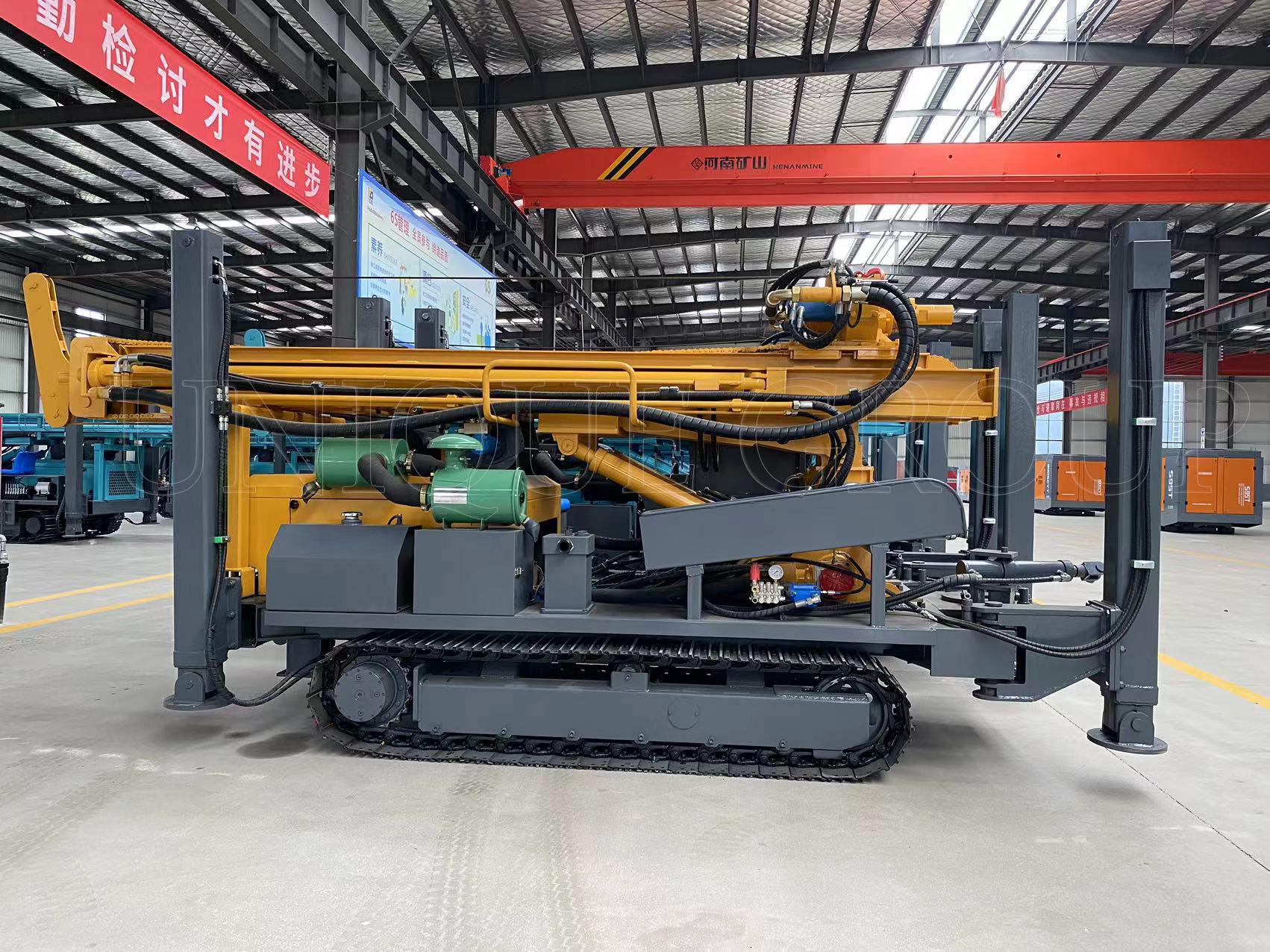How to choose the right model water well drilling rig for your project?

In water well construction projects, choosing the right drilling rig model is the key to ensuring efficient completion of the project. Different projects differ in application scenarios, geological conditions, construction depth, etc.
Only by accurately matching equipment performance can we avoid the situation of "overkill" or "inability". The following analyzes the selection logic from four core dimensions to help you quickly lock in the optimal solution.
1. Application scenarios: Determine the basic framework for model selection
Projects with different purposes have completely different functional emphases on drilling rigs. Agricultural irrigation projects usually need to be constructed in farmland areas. Such scenarios require drilling rigs to have strong mobility to adapt to the complex paths in the fields. For example, models with crawler chassis and detachable drill frames can be quickly transferred and easy to transport.
Municipal water supply projects pay more attention to construction efficiency and environmental protection requirements. Construction in urban areas often faces noise restrictions and construction period pressures. Diesel hydraulic-driven drilling rigs have become the first choice because of their high efficiency.
2. Geological conditions: the core indicator that determines the performance of drilling rigs
The stratum structure is a "hard indicator" that needs to be considered when selecting a model. In geology dominated by soil and gravel layers, the drilling resistance is small, and a rotary drilling rig can be selected. This type of drilling rig drives the drill bit to rotate and cut the stratum through the drill rod, and cooperates with the mud wall protection process to achieve rapid hole formation. UNIQUE mud pump rotary drilling rig, equipped with alloy roller drill bits, can reach a drilling speed of 2 meters per minute in sandy soil layers, and the vertical deviation of the hole formation is less than 0.5%.
When facing rock layers (especially granite and basalt with a hardness of more than 60MPa), an impact rotary drilling rig is required. This type of equipment provides rotational torque through the power head, while using the impactor to generate high-frequency impact force to break the rock. Equipped with a hydraulic impactor, it can achieve an average daily hole depth of 30 meters in rock layers with a compressive strength of 120MPa, which is 40% more efficient than traditional models. In addition, if you encounter quicksand layers or high water content formations, you also need to pay attention to the performance of the drilling rig's mud circulation system. Models with automatic mixing functions can effectively prevent hole collapse.
3. Construction depth: key parameters for quantifying equipment capabilities
The drilling depth is directly related to the power output and structural strength of the drilling rig. Shallow well projects (depth <100 meters) have relatively low equipment requirements, and small vehicle-mounted drilling rigs can meet the needs. For example, a certain lightweight drilling rig weighs only 3 tons and has a maximum drilling depth of 120 meters. It is suitable for household water wells or small irrigation projects. Its hydraulic lifting system can complete the erection of the drill frame within 10 minutes, shortening the preparation time.
The construction of medium-deep wells (100-300 meters) needs to focus on the torque of the power head and the pressure of the hydraulic system. Taking the depth of 200 meters as an example, the drilling rig needs to overcome the deadweight of the drill pipe and the friction of the formation, and the torque of the power head needs to reach more than 5000N・m. The UNIQUE drilling rig is equipped with a dual hydraulic motor drive with a torque of up to 6800N・m. With high-strength geological drill pipe, it can still maintain a stable drilling speed when constructing at a depth of 250 meters.
Deep well projects (>300 meters) are difficult operations and require professional deep well drilling rigs. This type of equipment usually adopts a modular design, which is easy to transport and assemble, and is equipped with a high-power diesel engine and a high-pressure hydraulic system.
4. Auxiliary functions: hidden factors to improve construction efficiency
In addition to core performance, the auxiliary functions of drilling rigs also affect the progress of the project. In areas with complex terrain (such as mountains and swamps), crawler chassis with all-terrain adaptive systems are more advantageous. The UNIQUE crawler drilling rig is equipped with a hydraulic suspension system, which can operate stably on a 25° slope, and the ground pressure is less than 0.3MPa, avoiding the risk of getting stuck.
Intelligent configuration is a "plus point" for modern construction. Drilling rigs with automatic recording of drilling depth, hydraulic system fault warning, and intelligent adjustment of drilling parameters can reduce manual errors. The PLC control system equipped with the UNIQUE drilling rig can automatically adjust the drilling speed and pressure according to the changes in the formation, which can increase the drilling efficiency by 20% under complex geological conditions and reduce drill bit wear by 30%.
When selecting, it is also necessary to comprehensively consider the transportation size of the equipment (such as whether the height of the drill frame after folding is suitable for road transportation), maintenance convenience (such as whether the hydraulic oil tank is easy to repair) and after-sales service network coverage.
It is recommended to use the four-step rule of "scenario positioning → geological analysis → depth matching → function screening" and combine specific project parameters (such as construction period requirements and budget costs) to ultimately determine the most suitable water well drilling rig model.

- Information Technology
- Office Equipment and Supplies
- Cars and Trucks
- Persons
- Books and Authors
- Tutorials
- Art
- Causes
- Crafts
- Dance
- Drinks
- Film
- Fitness
- Food
- Jeux
- Gardening
- Health
- Domicile
- Literature
- Music
- Networking
- Autre
- Party
- Religion
- Shopping
- Sports
- Theater
- Wellness



